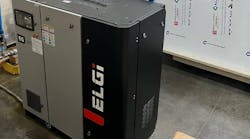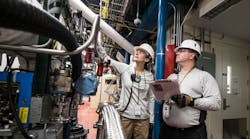From a defective product that causes potentially disastrous recalls to a product delivered to your customer outside of spec, production machinery that isn’t properly maintained is a manufacturing nightmare. When you think of preventative maintenance, you probably think a little bit of lubrication and recalibration doesn’t make that big of a difference. However, root cause analysis of recalled products has shown repeatedly that a lack of a preventative maintenance program can cause those exact results.
By ensuring that you have an effective preventative maintenance program in place in your facility, you are actively playing a role in quality control in your facility. Manufacturing has plenty of variables that can sometimes be beyond our control, but preventative maintenance on your production equipment isn’t one of them. What you lose in terms of production to perform preventative maintenance is gained back multiple times by producing a consistent and superb product that is meeting or exceeding quality standards.
1. Equipment Efficiency Means Product Reliability
By keeping your manufacturing facility properly maintained, you’re ensuring that your machinery is running as intended. Lack of preventative maintenance is a common cause of process variation, and it doesn’t take years to occur. The further off calibration a machine drifts, the greater the variance. Process variation often results in defective product or product that is off-spec.
For example, if your fruit filler is supposed to drop 3 oz. of strawberries per cup, yet it is only dropping 2.3 oz. into each cup because of a bad flowmeter, you are going to have customer complaints about the product having a low fruit percentage. Conversely, 3.2 oz. of strawberries per cup, and you have now skewed the product cost per unit for the entire batch, resulting in higher manufacturing costs and a lower profit margin.
With an effective preventative maintenance program in place in your manufacturing facility, you are ensuring that something as simple to remedy as a bad flow meter doesn’t result in scrap or rework product, or even customer complaints. By performing preventative maintenance, machines aren’t given the opportunity to result in misformulations because of parts failure. Instead, they are regularly inspected, lubricated, calibrated, and tested to ensure that they are running at optimum levels and producing the highest quality product as they were designed.
2. Reduce Scrap And Rework Product
Rework products and scrap products are costly. In order to reprocess faulty or below-standard products, you’re adding production expenses but not increasing the product output. It isn’t difficult to see how this could quickly turn into a manufacturing headache.
Efficiently operating equipment is the key to a consistent product. It only takes a small variance to ruin the taste or look of an entire batch, and depending on the variant it may be a scrap product that cannot be reblended to salvage the batch. That is the equivalent of throwing raw materials directly down the drain.
Think about how many batches it requires to rework a tank of a product if you can only use a 7% rework in your formula. Depending on your batch size, there is a good chance that you’ll end up losing product to expiration before you’ll be able to use the contents of the rework tank. If that sounds costly, it’s because it absolutely is.
3. Scheduled Output Vs. Actual Output
When a lack of preventative maintenance on your manufacturing equipment causes a large enough variance between scheduled output and actual output, it starts a chain reaction of negative effects in your facility. Because of less product output, production runs must increase to fill orders. Orders may be delayed, resulting in unhappy customers. It’s a domino effect and it doesn’t repair itself.
Once a certain percentage of the scheduled output is not being met, the reasons for the variance need to be investigated. Poorly maintained manufacturing equipment doesn’t need to be a reason production goals aren’t met. With a preventative maintenance program in place, it doesn’t take long to have equipment running as it is intended, with reduced breakdowns and higher quality output.
4. Less Downtime
Broken equipment resulting in unplanned downtime increases costs in almost every aspect of the facility. Labor of those on the clock, yet not producing. Parts costs are usually a substantial amount higher because you’re now repairing and replacing parts instead of performing the measures to keep everything running on spec. And chances are, if you have allowed the equipment to run until the point of breakdown, there is a much larger repair to be performed than simple preventative maintenance would have cost.
The fact is, preventative maintenance programs have been proven to reduce equipment breakdowns and also maximize the life of your machines. The manufacturer provides preventative maintenance guidelines that should be strictly adhered to in order to see the best possible results from the equipment. By following the guidelines for preventative maintenance, you’re protecting your assets, increasing output, and decreasing downtime caused by equipment breakdowns.
5. Balance Maintenance And Productivity
The ultimate goal of the facility is to achieve a balance of maintenance and productivity that prolongs asset life while meeting plant production needs. Without proper preventative maintenance, you’re virtually guaranteeing that you’ll see product variations due to poorly operating machines. The extent of the variation is the only real question to ask yourself.
Taking the time and effort to properly maintain your facility is an effective tool in the fight against scrap and recalled products. When you manufacture a consistent product because your production equipment is running at its peak capacity, you’re greatly reducing your chances of shipping products that are going to leave unsatisfied customers asking for refunds.
6. Develop A PM Program Before Breakdowns Happen
Putting a preventative maintenance program in place with the assistance of a Computerized Maintenance Management System (CMMS) only sounds difficult. Once you decide on the CMMS that would best suit your facility, you simply need to put together an asset listing and input the manufacturer's suggested preventative maintenance timelines. The time and labor that you expend on developing your preventative maintenance program is a mere drop in the proverbial bucket when you consider the price of one load of a recalled product. Don’t wait for your production machinery to cost you customers and money. A CMMS and skilled maintenance team can ensure that your facility manufactures a quality product every single time.










